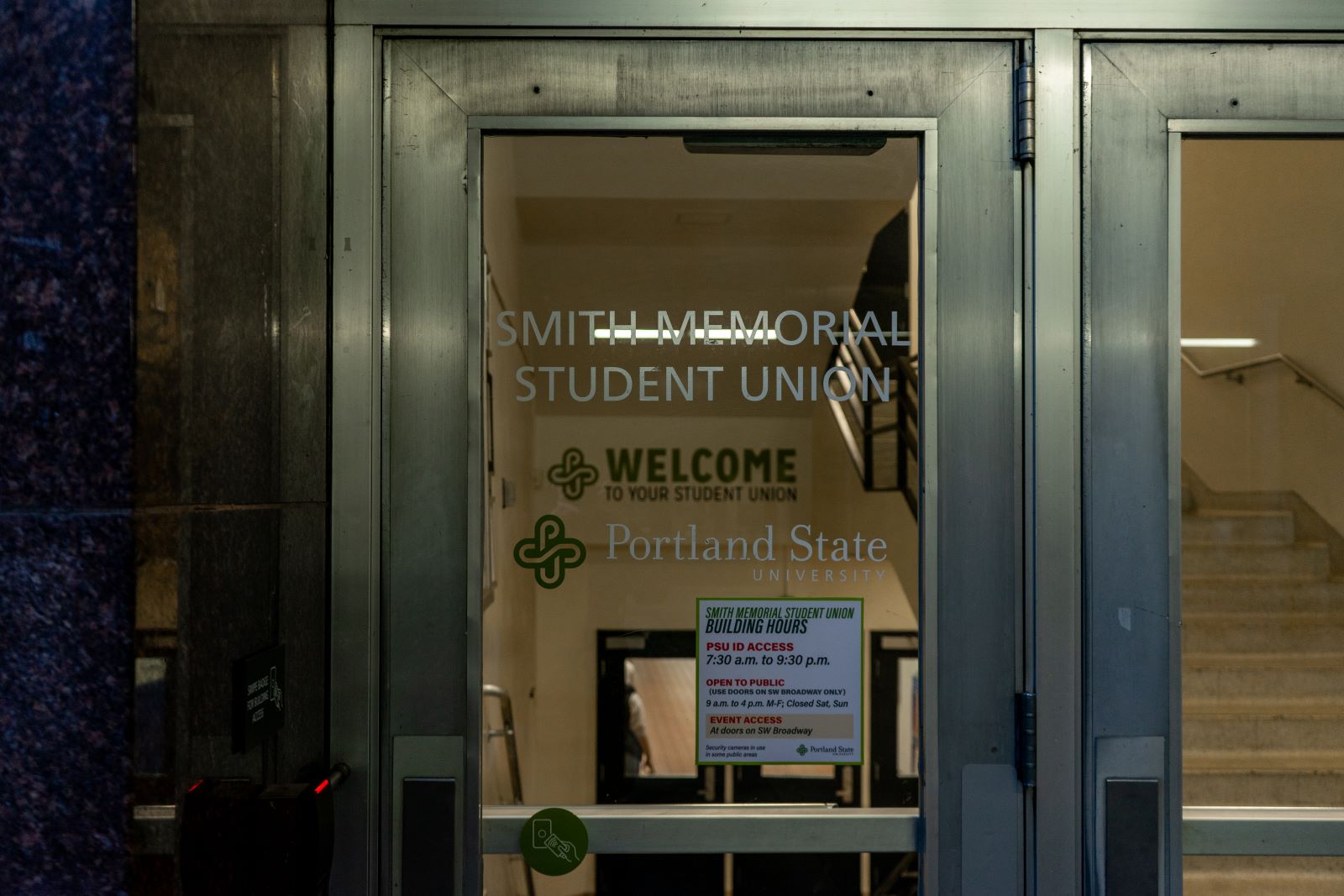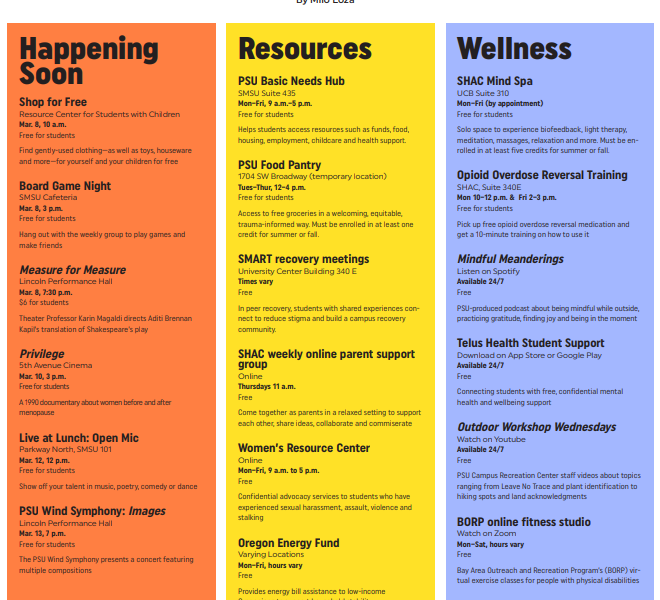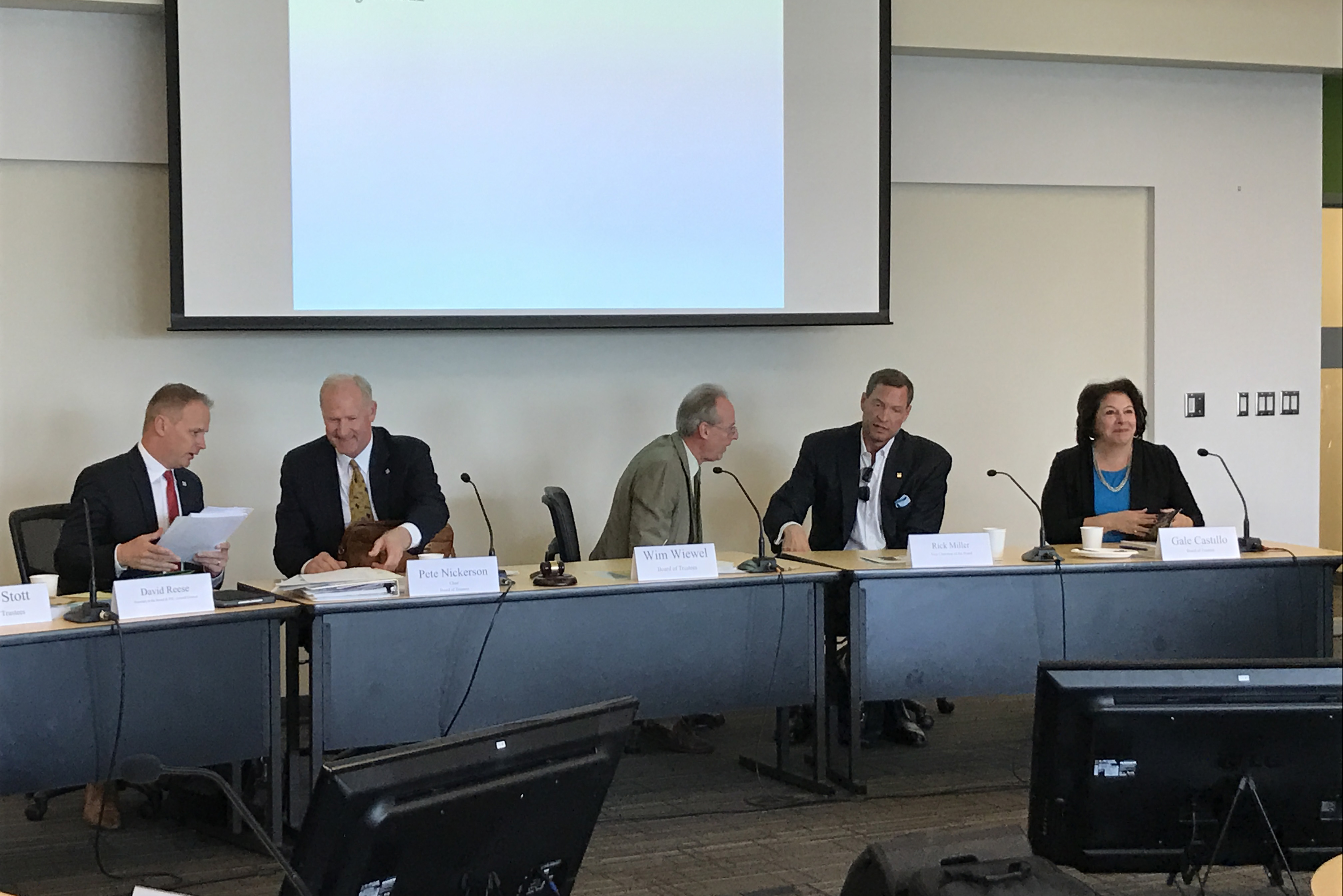Just about every student on campus has likely had an instance where they go to scan their card at a facility only to find themselves locked out of it. That student will soon realize they’ve come to the building after operating hours, and the facility is closed. Perhaps this may come as a surprise, as the student may swear up and down that the building was open at this time just last term.
The student is likely not wrong. Campus facility hours are constantly shifting in an effort to balance student needs and realities of operation, such as declining enrollment, understaffing and underfunding.
Open hours vary from building to building, as does who decides them. Michael Bowman serves as the Interim Dean for the Branford Price Millar Library. He was quick to identify two primary factors which determine the hours for the library: staffing and demand. The pandemic, he noted, heavily impacted the latter.
“Our hours are shorter than they were pre-pandemic,” Bowman said. “Monday through Thursday we close at 10 [p.m.], but pre-pandemic we closed at midnight.”
How the library determines its demand is based on how many people are coming into the library and when people show up.
“We actually get monthly entry and exit data [for the turnstiles] that we can sort by time and day of the week,” Bowman said. “Sometimes, we don’t want to expand hours. Instead, we might look at shifting them. It might make sense to shift opening time and closing time by one hour after we get a sense of how many people are coming in during that first hour.”
In Oct. 2023, the total turnstile count at the library was 40,429. In Oct. 2019, the count was 108,494. That’s just 37.3% of the traffic pre-pandemic.
At the heart of this lowered demand is the ever-present factor of declining enrollment here at Portland State. Bowman confirmed this as a factor for the library’s present hours. It has also affected the hours of other buildings on campus, such as the Campus Recreation Center.
“As enrollment has declined, our funding for labor and other expenses has decreased,” said Jenny Welnick, the Director of Campus Rec. “In addition, the number of people purchasing memberships—which includes faculty, staff, alumni and plus-one members—has not rebounded to pre-pandemic levels.”
For the 2023 fiscal year, Campus Rec staff counted 198,497 total visits, 158,235 of whom were students. In 2020, total visits numbered 221,065.
Another factor is staffing. Due to its classification as a staffed building, the Millar Library can only be open when a specific, minimum number of staff members are present. For the library, this means having at least one Access Services staff member present at the front-end circulation desk. Bowman said that filling these positions is a top priority due to these requirements.
The price tag to keep buildings open is also on the rise. Randy Mishler—the Marketing and Communications Coordinator for Smith Memorial Student Union (SMSU)—pointed out that utility bills are becoming increasingly costly.
“We usually have some downtime to keep the building operational,” Mishler said. “We can close down for a while, like during a break or something, or sometimes we’ll close for a few days. It helps us save a little bit on our utilities. It’s been an outrageous thing to try and gauge what we’re going to need there for the last couple of years. The bills have been much higher than were projected.”
SMSU receives some funding from student fees, which the Student Fee Committee allocates. Campus Rec and the Millar Library both receive money from these fees as well. Campus Rec also generates revenue through membership fees, equipment rentals and program fees. Declining demand, however, has affected this revenue.
SMSU does not directly generate revenue through sales from interior businesses despite being home to Smith’s Kitchen, Bowery Bagels, University Market and other food stops. Mishler highlighted that third parties rent out the space from PSU, indicating that they own the spaces.
The administration from all three buildings stated that structuring business hours is a balance between offering students the best services possible and being very conscientious of logistical factors, such as budget and staffing.






